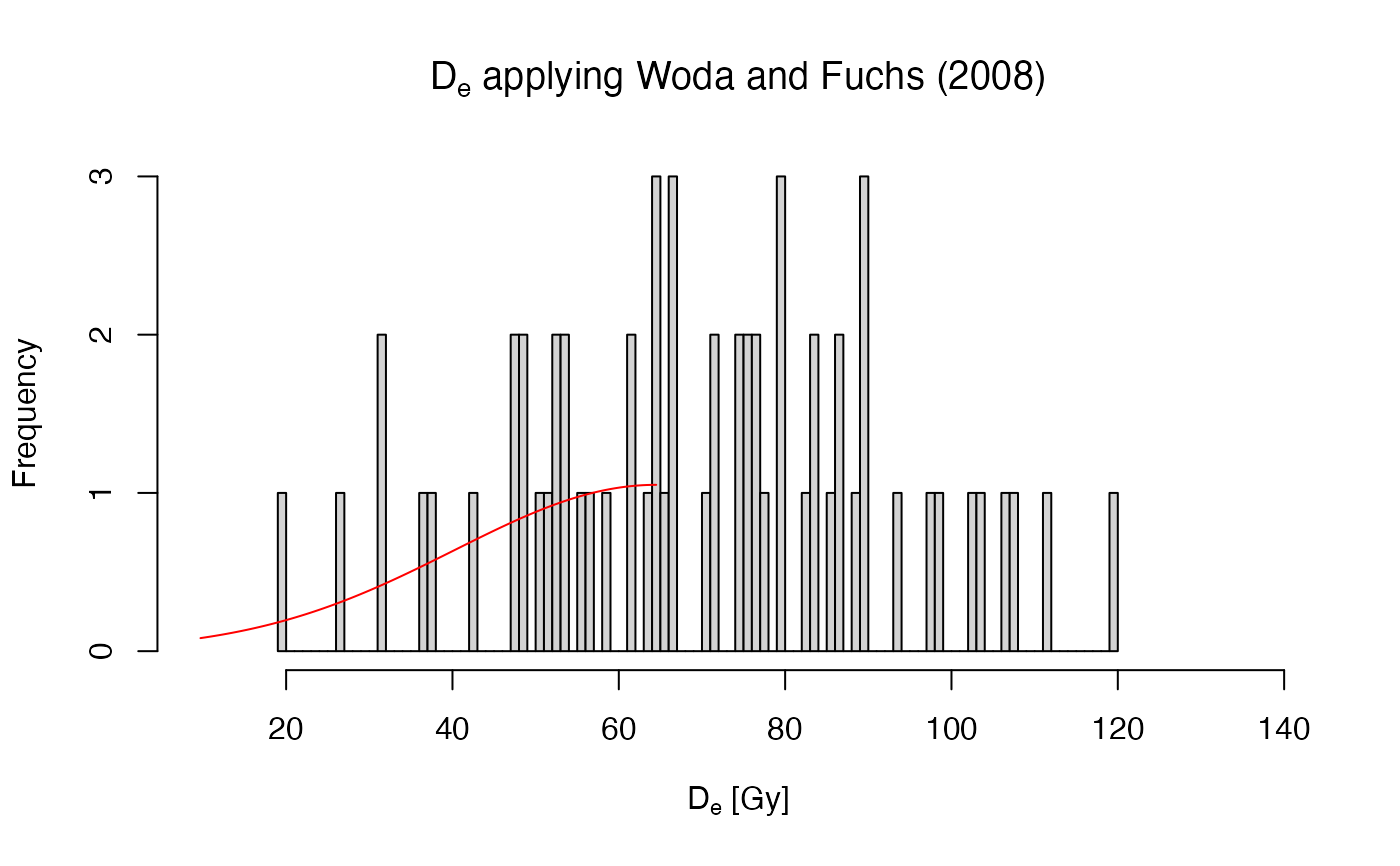Obtain the equivalent dose using the approach by Woda and Fuchs 2008
Source:R/calc_WodaFuchs2008.R
calc_WodaFuchs2008.RdThe function generates a histogram-like reorganisation of the data, to assess counts per bin. The log-transformed counts per bin are used to calculate the second derivative of the data (i.e., the curvature of the curve) and to find the central value of the bin hosting the distribution maximum. A normal distribution model is fitted to the counts per bin data to estimate the dose distribution parameters. The uncertainty of the model is estimated based on all input equivalent doses smaller that of the modelled central value.
Arguments
- data
data.frame vector, or RLum.Results object (required): for data.frame: either two columns: De (
values[,1]) and De error (values[,2]), or one: De (values[,1]). If a numeric vector or a single-column data frame is provided, De error is set toNA. For plotting multiple data sets, these must be provided aslist(e.g.list(dataset1, dataset2)).- breaks
numeric: Either number or locations of breaks. See
[hist]for details. If missing, the number of breaks will be estimated based on the bin width (as function of median error).- plot
logical (with default): enable/disable the plot output.
- ...
Further plot arguments passed to the function.
How to cite
Kreutzer, S., Dietze, M., 2025. calc_WodaFuchs2008(): Obtain the equivalent dose using the approach by Woda and Fuchs 2008. Function version 0.2.0. In: Kreutzer, S., Burow, C., Dietze, M., Fuchs, M.C., Schmidt, C., Fischer, M., Friedrich, J., Mercier, N., Philippe, A., Riedesel, S., Autzen, M., Mittelstrass, D., Gray, H.J., Galharret, J., Colombo, M., Steinbuch, L., Boer, A.d., 2025. Luminescence: Comprehensive Luminescence Dating Data Analysis. R package version 1.1.1. https://r-lum.github.io/Luminescence/
References
Woda, C., Fuchs, M., 2008. On the applicability of the leading edge method to obtain equivalent doses in OSL dating and dosimetry. Radiation Measurements 43, 26-37.
Author
Sebastian Kreutzer, Institute of Geography, Heidelberg University (Germany),
Michael Dietze, GFZ Potsdam (Germany)
, RLum Developer Team
Examples
## read example data set
data(ExampleData.DeValues, envir = environment())
results <- calc_WodaFuchs2008(
data = ExampleData.DeValues$CA1,
xlab = expression(paste(D[e], " [Gy]"))
)
